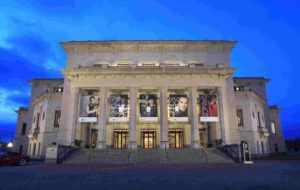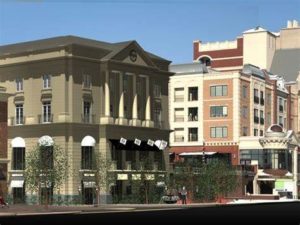 In Part 1, we described the delicate balance of municipal government finance – revenues, expenses and the tax base. We also discussed how any increase or decrease in one requires an offsetting increase or decrease in the others to keep thing in balance.
In Part 1, we described the delicate balance of municipal government finance – revenues, expenses and the tax base. We also discussed how any increase or decrease in one requires an offsetting increase or decrease in the others to keep thing in balance.
Since first elected as mayor of Carmel in 1995 – nearly a quarter-century ago – Jim Brainard has sought to recreate and redevelop the city into a destination for patrons of the arts. In the process, Carmel’s rich heritage is being replaced by a dense new faux downtown of expensive mixed-use commercial and residential buildings, headquarters buildings for companies relocating from the Meridian Corridor and a public plaza to entertain patrons of the two neighboring establishments.
All of this, of course, costs money. A lot of money.
 This leaves the mayor with a dilemma. How to create enough enthusiasm and demand for developers and investors to propose and build new projects to infill this part of town in a manner that will attract those patrons of the arts. And, how to create this enthusiasm and demand in a way that doesn’t rely on large (and politically damaging) tax increases.
This leaves the mayor with a dilemma. How to create enough enthusiasm and demand for developers and investors to propose and build new projects to infill this part of town in a manner that will attract those patrons of the arts. And, how to create this enthusiasm and demand in a way that doesn’t rely on large (and politically damaging) tax increases.
If existing revenues aren’t there to support an expanded public investment, then additional revenues must be generated. If raising tax rates and fees on Carmel property owners is not an option, then the tax base itself must be expanded, so that the number of eligible taxable parcels and developed units per acre (the tax base) are increased.
This is Jim Brainard’s strategy. Expansion of the tax base to generate these revenues and pay for roundabouts and other public infrastructure has taken two forms. The first is a series of annexations of parcels into the city, to the point where the entirety of Clay Township has now been annexed into the city, despite objections from citizens. This not only increases the land and other units available to collect property taxes from but also increases the tax burden upon police and fire services, streets, schools, parks and other services in a like proportion.
The second manner is which the tax base is being expanded is the use of the Carmel Redevelopment Commission (CRC) to assert its authority to declare redevelopment zones by ordinance and purchase (via the Carmel Redevelopment Authority and Carmel Bond Bank) existing parcels within the zones, then transfer these parcels to private developers that enter into a tax-increment financing (TIF) arrangement with the developer to have the project built.
 Regardless of the developer, each redevelopment project is focused almost solely on a single design: a multi-story mixed used building with street- or ground-level retail or other commercial space and upper floors consisting of office or residential space that (at least in theory) can be marketed for sale independently and – thus – multiply the units that can be taxed for the parcel and increase the revenue streams coming from the project.
Regardless of the developer, each redevelopment project is focused almost solely on a single design: a multi-story mixed used building with street- or ground-level retail or other commercial space and upper floors consisting of office or residential space that (at least in theory) can be marketed for sale independently and – thus – multiply the units that can be taxed for the parcel and increase the revenue streams coming from the project.
There are several unintended consequences to the practice of using TIF to erect a series of similarly configured high-density buildings. First and foremost is a surplus of retail space far in excess of the current local demand. This glut of retail space serves to – in turn – depress demand and the potential lease rates lessors can charge retail tenants as they attempt to fill empty storefront spaces citywide. And demand for upper-floor space – while present – has not drawn the per-unit sales values projected in most of these mixed-use projects completed to-date.
Secondly, existing older retail spaces with affordable lease rates are being displaced and forever lost as buildings deemed “blighted” by the CRC are purchased and razed, to be replaced with new mixed-use retail space with lease costs often 4 or 5 times higher per square foot.
Perhaps the ugliest downside to TIF is how is works. When a property is converted to a TIF project, the redevelopment agency (CRA in this case on behalf of the CRC) purchases the property at a certain price that becomes known as the base valuation. Typically, the base valuation is low, as the property is in some sort of substandard condition that has otherwise failed to attract improvements. The expectation and how TIF is designed is that the project adds assessed value to the parcel above and beyond what the parcel was purchased for.
 However, the operating budgets for schools, parks, libraries and city services only receive property taxes collected on the base valuation of the parcel, as shown in the graphic above. All that extra valuation above the base valuation generates taxes that are diverted back to the redevelopment agency to help pay off the parcel acquisition and other project costs – local taxing entities do not receive nor otherwise benefit from these extra taxes collected on the increased valuation. The result is extra burdens being put on local services without a commensurate increase in available tax revenues to pay for them within the (typically) 20-year term of a TIF.
However, the operating budgets for schools, parks, libraries and city services only receive property taxes collected on the base valuation of the parcel, as shown in the graphic above. All that extra valuation above the base valuation generates taxes that are diverted back to the redevelopment agency to help pay off the parcel acquisition and other project costs – local taxing entities do not receive nor otherwise benefit from these extra taxes collected on the increased valuation. The result is extra burdens being put on local services without a commensurate increase in available tax revenues to pay for them within the (typically) 20-year term of a TIF.
But, because of lack of fiscal constraint and discipline in spending, the projects keep rolling out. Thousands of dollars in developer cash continues to flow into the campaign accounts of Jim Brainard and incumbent councilors. In a quid pro quo, the incumbent councilors rubber-stamp the CRC’s activities and maintain the least oversight possible.
But as long as the tax base can grow, taxes remain low and the same people keep getting reelected by the majority of the 12% of registered voters that bother to vote and believe that the mayor’s strategy insulates them from any economic hardship in the future — such as when municipal bond principal payments come due.

